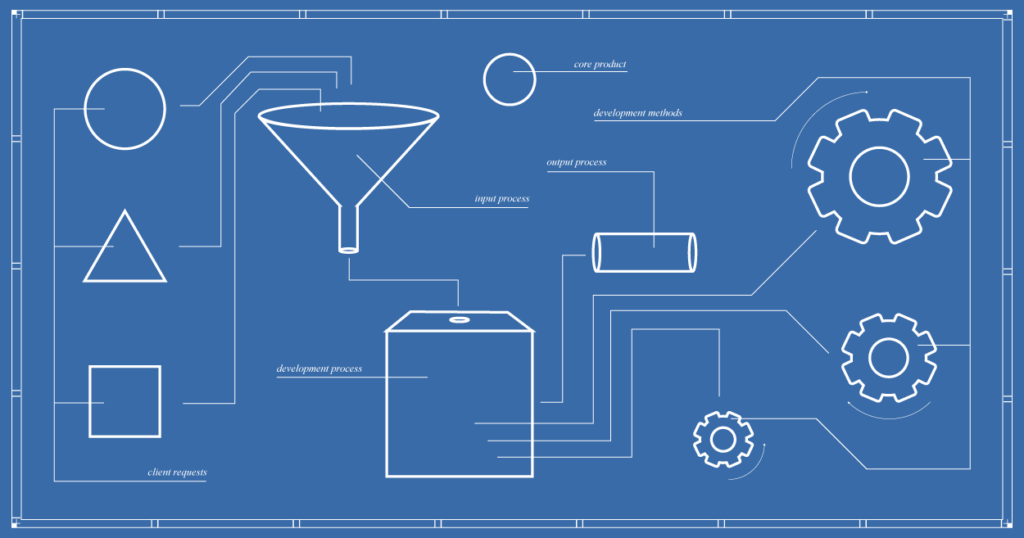We had the pleasure to work with a startup company that was quickly growing and highly focused on selling their product, but was finding itself at an impasse as to how to optimize their internal operational processes. The startup used a Fulcrum Data Science Acceleration Team (DSAT) to jump start their data pipeline operations, sales process, and end-client delivery process. In this article, we’ll share our lessons learned and suggestions for ramping up operations of startup organizations in a fast growth mode.
Fast pace of growth creates business and operational challenges
As a tech startup, this company was looking to expand rapidly to ensure they maintained their first mover advantage in the space. Though they had formed the core of a good product vision and had done an excellent job of building a broad sales network, they had an extensive backlog of work. Prior to engaging Fulcrum, they had made a large number of commitments to end-clients and were struggling with the development of their data platform being severely behind schedule.
Additionally, it soon became clear that they had a couple of additional challenges. The first was a fairly typical issue of poor communication between the sales and engineering teams. This hurdle was further exacerbated by geographic separation: their product was being designed and built on the West Coast, but marketed by a sales team based on the East Coast. The two teams struggled to align on expectations around the platform they were building, including product features and timelines.
The second issue was created by the timing of the initial sales in relation to the maturity of the core business model. Early on, the sales team sold a number of end-client projects that weren’t central to the core product that was ultimately developed and brought to market. The disparity between the work sold and the capabilities of the platform became clearer as time elapsed and the thinking around the core business model matured. The company found themselves in the awkward position of being committed to fulfill many diverse and complex projects, a number of which were not well-suited or relevant to the product being built.


The approach to correct course
The startup and Fulcrum agreed the best way to set about solving the increasing friction and backlog was to divide the Fulcrum DSAT Team into two work streams: Client Success and Data Engineering.
The top priority on the Client Success side was to immediately focus on handling the overwhelming backlog of end-client projects that were falling behind schedule. As there was no existing protocol for the Client Success workflow, we carefully took inventory of the end-client commitments, tracked progress on each project, and focused on prioritizing the ones that were most urgent. In order to make headway, we needed to dig into the underlying data as well as learn the parameters of the existing platform. Our DSAT Team established best practices for creating data queries on the startup’s platform and running large-scale data analyses to improve efficiency on a go-forward basis.
As part of our role, we interacted directly with startup staff and end-clients in meetings and ongoing communications as a part of the Client Success team. Fulcrum used its technical expertise to facilitate negotiations and deliverables between the startup’s sales staff and end-clients, and to help bridge the communication gap between the startup’s sales and product teams. Fulcrum became deeply involved in creating product demos and played an early role in sales engineering, helping to steer the product development roadmap to align with end-client needs and expectations. Our efforts to streamline the delivery process and to work off the project backlog contributed significantly to keeping end-clients happy. The Fulcrum DSAT Team also worked with the startup to refine the sales pitch to ensure future projects sold were better aligned with product capabilities and future aspirations.
On the Data Engineering side, we focused on building out and operationalizing some of the much-needed product features dictated by end-client projects. Later on, Data Engineering transitioned to developing some of the startup’s first off-the-shelf data pipelines, a key component of their future product vision. Throughout our involvement in both Client Success and Data Engineering, we strove to further alleviate the communication gap between sales and engineering.
Key takeaways from being in the trenches with a startup tech company
- Organization is key. We got to work immediately organizing and tracking each project. This included setting up a standing daily meeting with management to review the extensive to-do list and report on progress made, so in turn the startup could keep end-clients happy by communicating progress regularly.
- Help is available for backlog. The number of projects sold far exceeded the startup’s delivery capabilities, especially in light of initial sales not being completely aligned with the product’s core capabilities. The product development schedule needed to deliver the initial sales promises was also too aggressive for the existing startup staff. The Fulcrum DSAT team was the perfect solution to working off the backlog and operationalizing processes and workflows with a high degree of technical skill, client savvy, and cross-industry expertise.
- Build clarity and communication. We raised important issues about the conflict between what was sold and what was being developed to management and provoked conversations that ultimately helped clarify their product vision. This clarity made it easier for sales to convey proper expectations to end-clients and make better upfront determinations about project fit on a go forward basis.
- Code for repeatable process from the beginning. Our team contributed a large volume of code to the startup’s software development kit. We wrote key pieces of their data ETL process and assisted them in building and piloting their pipeline development kit. With the help of Fulcrum’s data engineers, the startup succeeded in building some of their first data pipelines.
By the end of our engagement, the startup had successfully worked through their backlog of projects and had refocused effort on its core business of building data pipelines. They made substantial progress maturing the platform, building out the pipeline development kit, and even secured a large new round of funding. Subsequently, they were able to take their platform and sales to the next level with a strong product and process backbone. Curious how Fulcrum could accelerate your startup? Contact us to find out more.



